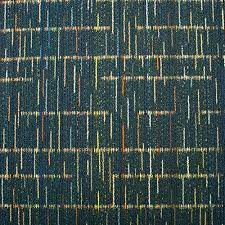 When it comes to interior design and home improvement, choosing the right flooring is a crucial decision that can significantly impact the aesthetics and functionality of a space. One of the perennial debates in the flooring world is whether to opt for carpet tiles or traditional carpeting. Both options have their merits, but in certain situations, carpet tiles emerge as the superior choice. In this blog post, we will delve into the considerations that make carpet tiles a more viable option in specific scenarios.
When it comes to interior design and home improvement, choosing the right flooring is a crucial decision that can significantly impact the aesthetics and functionality of a space. One of the perennial debates in the flooring world is whether to opt for carpet tiles or traditional carpeting. Both options have their merits, but in certain situations, carpet tiles emerge as the superior choice. In this blog post, we will delve into the considerations that make carpet tiles a more viable option in specific scenarios.
1. Customization and Versatility
Carpet Tiles: A Palette of Possibilities
One of the key advantages of carpet tiles over traditional carpeting is the unparalleled level of customization they offer. Carpet tiles are available in a myriad of colors, patterns, and textures, providing homeowners with a canvas to create unique and eye-catching designs. Unlike traditional carpeting, where your options might be limited to pre-made rolls, carpet tiles allow you to mix and match different styles to create personalized patterns or even incorporate branding and logos in commercial spaces.
In spaces like playrooms, children’s bedrooms, or eclectic home offices, the ability to experiment with diverse designs is invaluable. With carpet tiles, you’re not just flooring a room; you’re crafting an experience.
2. Installation and Maintenance
Carpet Tiles: A Breeze to Install and Maintain
Installation and maintenance are pivotal aspects to consider when choosing flooring. Traditional carpeting often requires meticulous installation, with precise measurements and professional expertise. This process can be time-consuming and expensive. On the other hand, carpet tiles present a simpler installation process that can often be accomplished by homeowners themselves, saving both time and money.
What’s more, if a section of your carpet experiences significant wear or staining, replacing a carpet tile is significantly easier than addressing the issue with traditional carpeting. Simply remove the damaged tile and replace it with a new one, without the need to disrupt the entire floor. This modular feature not only simplifies maintenance but also extends the life of your flooring investment.
3. High-Traffic Areas
Carpet Tiles: Durability and Practicality
In high-traffic areas, such as hallways, entryways, and commercial spaces, the durability of flooring is paramount. Carpet tiles, due to their modular design, tend to be more durable in such environments compared to traditional carpeting. Individual tiles can be swapped out when they become worn or stained, ensuring that the flooring continues to look fresh and inviting without the need for a full replacement.
Additionally, carpet tiles often boast superior stain resistance and resilience to wear and tear, which is a crucial consideration in areas prone to heavy foot traffic. Whether you’re managing a bustling office space or a household with energetic pets and kids, carpet tiles can endure the rigors of daily life while maintaining an appealing appearance.
4. Eco-Friendly Options
Carpet Tiles: A Sustainable Flooring Solution
In an era where sustainability and environmental consciousness are paramount, carpet tiles offer a distinct advantage. Many manufacturers are producing carpet tiles using recycled materials, reducing their environmental impact. Additionally, the modular nature of carpet tiles promotes sustainability. If one section of the floor gets damaged or worn beyond repair, you can replace only the affected tiles, reducing waste and extending the life of the flooring.
Traditional carpeting, on the other hand, often requires full replacement when it reaches the end of its lifespan. This can result in more waste and a greater impact on the environment. If sustainability is a priority for you, carpet tiles align more closely with eco-friendly practices.
5. Flexibility and Adaptability
Carpet Tiles: Flooring for Evolving Spaces
As your needs change and your space evolves, you’ll want flooring that can adapt to these transformations. Carpet tiles provide the flexibility to alter the flooring design or configuration as required. Whether you’re reconfiguring office spaces, converting a room, or updating your home’s aesthetic, carpet tiles allow you to make adjustments without a complete overhaul.
Traditional carpeting, once installed, is more challenging to modify. Any change in layout or design can be time-consuming and expensive, often involving significant labor and material costs. Carpet tiles empower you to be more nimble in your design choices, making them an excellent choice for dynamic spaces that demand adaptability.
Conclusion
In the flooring arena, the debate between carpet tiles and traditional carpeting is ongoing, each having its merits and drawbacks. However, when considering factors such as customization, installation, durability, sustainability, and adaptability, carpet tiles emerge as a strong contender in various scenarios. Their ability to offer versatility, easy maintenance, and suitability for high-traffic areas makes them an appealing choice for both residential and commercial spaces. As you embark on your flooring journey, assess your needs, prioritize your preferences, and consider the unique advantages that carpet tiles can bring to your living or working space.
Read next: Choosing the Perfect Flooring



